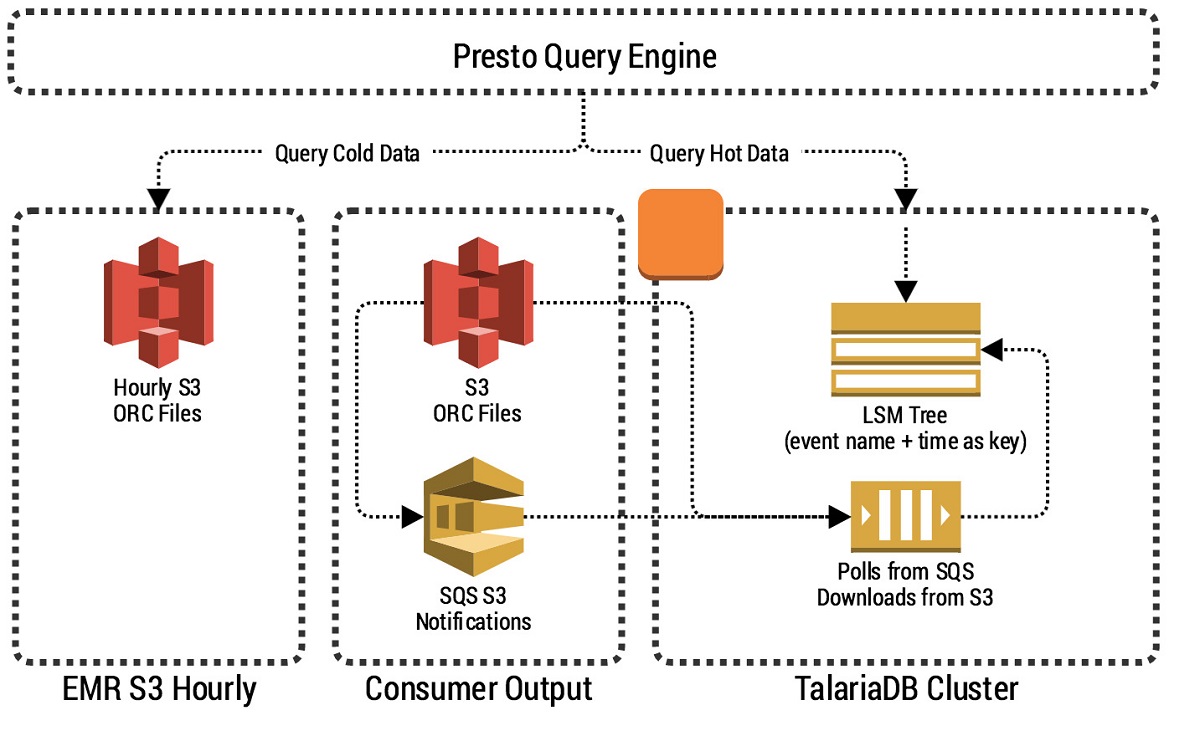Introduction
In today’s digital age, data is generated at an unprecedented rate. It is estimated that by 2025, the digital universe will reach a staggering 175 zettabytes of data. This immense volume of information, known as big data, holds immense potential to transform industries and drive innovation in various fields. One industry that has harnessed the power of big data is social media, with Facebook being at the forefront of integrating data analytics into its operations.
Big data refers to the enormous sets of structured and unstructured data that cannot be analyzed using traditional data processing methods. It encompasses vast amounts of information generated from various sources like social media platforms, online transactions, mobile devices, and sensors. These vast datasets provide valuable insights and patterns, helping organizations make data-driven decisions and gain a competitive advantage.
As the world’s largest social networking site, Facebook has an immense amount of user-generated data at its disposal. With over 2.8 billion monthly active users, Facebook gathers a wealth of data points, including posts, likes, shares, comments, and even location information. This vast pool of data offers Facebook a unique opportunity to leverage big data analytics to enhance user experience, target advertisements, and personalize content.
This article explores how Facebook utilizes big data to improve its platform and offers a more personalized user experience. We will delve into the processes involved in collecting and analyzing user data, as well as the benefits and potential drawbacks associated with such practices. By understanding how Facebook harnesses big data, we can gain valuable insights into the broader implications and challenges of data-driven decision-making in the digital age.
What is Big Data?
Big data refers to vast amounts of structured and unstructured data that organizations collect from various sources. It encompasses data sets that are too large, complex, or dynamic to be processed using traditional methods. The key characteristics of big data are known as the three V’s: volume, velocity, and variety.
Volume: Big data is characterized by its sheer volume. Organizations collect vast amounts of data from multiple sources, including social media, online transactions, sensors, and more. This massive amount of data provides a wealth of information that can be analyzed to gain insights and make data-driven decisions.
Velocity: Data is generated at an unprecedented speed in today’s digital world. With the proliferation of social media, e-commerce, and IoT devices, data is being generated in real-time. This velocity of data requires organizations to have the capability to process and analyze information almost instantaneously, enabling timely decision-making.
Variety: Big data comes in various forms and formats, including structured, semi-structured, and unstructured data. Structured data refers to information that is organized in a fixed format like a database. Semi-structured data lacks a consistent structure, like emails or social media posts. Unstructured data, such as images, videos, and audio files, poses unique challenges due to its lack of organization.
Big data analytics involves the use of advanced tools and technologies to extract meaningful insights and patterns from large datasets. This process involves cleaning and transforming data, performing statistical analysis, and employing machine learning algorithms to identify trends and make predictions.
The use of big data has revolutionized industries across sectors, including finance, healthcare, marketing, and transportation. Organizations can now leverage big data to drive decision-making, improve operational efficiency, personalize user experiences, and gain a competitive edge in the market.
In the context of social media platforms like Facebook, big data plays a crucial role in understanding user behavior, enhancing user experience, and enabling targeted advertising. By harnessing the power of big data, Facebook can provide users with personalized content and recommendations, ultimately improving their overall experience on the platform.
Big Data in Social Media
The rise of social media platforms has created an enormous amount of user-generated data, making social media an ideal environment for leveraging big data analytics. The nature of social media encourages users to actively share their thoughts, opinions, and preferences, generating a wealth of data that can be analyzed to uncover meaningful insights. This abundance of user-generated data has enabled social media platforms like Facebook to harness the power of big data and revolutionize the way they operate.
One of the key advantages of big data in social media is the ability to understand and analyze user behavior on an unprecedented scale. Every interaction, from likes and comments to shares and clicks, generates valuable data points that can be used to gain insights into users’ preferences, interests, and behaviors. By analyzing this data, social media platforms can identify patterns and trends, enabling them to deliver more targeted and personalized content to their users.
Furthermore, big data analytics allows social media platforms to track user engagement and measure the effectiveness of their strategies. By monitoring metrics such as click-through rates, impressions, and conversion rates, platforms like Facebook can optimize their algorithms and algorithms to enhance user experience and drive user engagement.
Another area where big data is transforming social media is in the realm of advertising. By analyzing user data, social media platforms can offer highly targeted and personalized advertisements to their users. Advertisers can leverage big data analytics to segment their target audience based on demographics, interests, and behavior, ensuring that their ads reach the right people at the right time. This level of precision and targeting not only benefits advertisers by increasing the effectiveness of their campaigns but also benefits users by providing them with more relevant and engaging advertisements.
Additionally, big data analytics can help social media platforms detect and mitigate issues such as fake accounts, spam, and inappropriate content. By analyzing patterns and behaviors, platforms can identify and flag suspicious activities, ensuring the integrity and security of the platform.
Overall, big data has transformed the way social media platforms operate. By leveraging the vast amount of user-generated data, platforms like Facebook can better understand user behavior, deliver personalized content, and provide targeted advertisements. The integration of big data analytics in social media has not only improved user experience but has also opened up new avenues for businesses to connect with their target audience and achieve their marketing objectives.
Overview of Facebook
Facebook, founded by Mark Zuckerberg in 2004, has grown to become the world’s largest social networking platform. With over 2.8 billion monthly active users as of 2021, Facebook has connected people from all around the globe and transformed the way we communicate and share information.
At its core, Facebook provides a platform for users to create profiles, connect with friends and family, and share posts, photos, and videos. Users can also join groups, like pages, and engage in various activities within the platform. It has evolved into a multi-faceted platform that caters to different interests and needs.
In addition to personal profiles, Facebook also offers features for businesses, organizations, and public figures to create pages and engage with their audience. This creates a dynamic ecosystem where users can connect with both individuals and entities that align with their interests and preferences.
Over the years, Facebook has expanded its services through acquisitions, such as Instagram and WhatsApp, diversifying its reach and user base. The platform has also introduced various features like Facebook Messenger, Marketplace, and Facebook Live, providing users with additional ways to connect, shop, and share experiences.
Facebook’s mission is to bring people closer together and build communities. The platform has played a significant role in facilitating social connections, enabling people to maintain relationships, share experiences, and support causes. It has also become a hub for news and information, shaping public discourse and providing a platform for individuals to amplify their voices.
As a social media platform, Facebook has encountered its fair share of controversies and challenges. Concerns around privacy, data security, and the spread of misinformation have garnered significant attention. The platform has made efforts to address these issues by implementing stricter policies, enhancing privacy controls, and partnering with fact-checking organizations.
Facebook’s vast user base and extensive reach make it a prime candidate for harnessing the power of big data. The platform collects and analyzes a wide range of user data to improve its services, enhance user experience, and deliver targeted advertisements. This utilization of big data allows Facebook to constantly adapt and evolve to meet the changing needs and preferences of its users.
Despite the challenges and controversies, Facebook continues to be a dominant force in the social media landscape. Its influence and impact on society cannot be understated, and its ability to leverage big data helps to shape the future of social networking and digital communication.
Collecting Data on Users
Facebook collects a vast amount of data on its users to fuel its big data analytics initiatives. This data collection occurs through various channels and interactions on the platform, enabling Facebook to gain valuable insights into user behavior, preferences, and demographics.
One primary source of user data on Facebook is the information provided during the registration process. Users are required to create a profile and share personal details such as their name, date of birth, gender, and location. This information forms the foundation of a user’s profile and helps Facebook categorize users into different demographic segments.
Furthermore, as users engage with the platform, Facebook collects data on their interactions, such as likes, comments, shares, and posts. These actions provide valuable insights into user preferences, interests, and engagement patterns. Additionally, Facebook collects data on the content that users interact with, including posts, photos, videos, and articles. This data helps to refine and improve Facebook’s algorithms and personalized content recommendations.
Facebook also tracks user activity outside of its platform through technologies like social plugins and Facebook Pixel. When a user interacts with these plugins, data about their browsing behavior and preferences is transmitted back to Facebook. This information is used to personalize the user experience and deliver targeted advertisements both within and outside of Facebook.
Moreover, Facebook gathers data on user behavior through its suite of apps and services, including Instagram and WhatsApp. These platforms provide additional sources of data, allowing Facebook to gain a more comprehensive understanding of a user’s online activities, interests, and connections.
Facebook also collects data through the use of cookies and other tracking technologies. These technologies monitor user behavior on the platform, including the pages visited, ads clicked on, and the duration of each session. This data is analyzed to improve user experience, optimize content delivery, and tailor advertising campaigns to individual users.
It’s important to note that Facebook has implemented privacy controls and settings to allow users to manage their data and control the information they share. Users have the ability to adjust privacy settings, customize the audience for their posts, and even download a copy of their data from the platform.
By collecting this extensive amount of user data, Facebook is able to understand user preferences, interests, and behaviors on a granular level. This data forms the foundation for Facebook’s big data analytics initiatives, allowing the platform to continuously enhance and personalize the user experience, as well as deliver targeted advertising campaigns that are relevant to individual users.
Analyzing User Behavior
One of the key uses of big data at Facebook is the analysis of user behavior. By analyzing the vast amount of data collected from user interactions, Facebook can gain valuable insights into how users engage with the platform and tailor their offerings accordingly.
Through advanced analytics techniques, Facebook can uncover patterns, trends, and correlations in user behavior. For example, by analyzing user interactions such as likes, comments, and shares, Facebook can determine the types of content that resonate most with users. This information helps in refining the content recommendation algorithms to deliver more relevant and engaging content to each user.
Big data analytics also enables Facebook to understand how users navigate the platform, how long they spend on different features, and what actions they take. This information helps in optimizing the user interface and maximizing user engagement. By identifying pain points or areas where users may get stuck, Facebook can improve the user experience and ensure a seamless and enjoyable journey on the platform.
Facebook also analyzes user behavior to identify trends and interests. For example, by examining the types of pages and groups that users engage with, Facebook can gain insights into users’ interests and preferences. This information is invaluable for targeting advertisements and recommending relevant content that aligns with users’ personal preferences.
Machine learning algorithms play a significant role in analyzing user behavior on Facebook. These algorithms can predict user preferences based on past behaviors and patterns. By leveraging the power of machine learning, Facebook can deliver highly personalized content and recommendations to each user, enhancing their overall experience.
Additionally, Facebook uses big data analytics to identify and mitigate potential risks on the platform. By analyzing user behavior patterns, Facebook can detect and take action against activities such as spam, fake accounts, and harmful content. This proactive approach helps in maintaining the integrity and safety of the platform for its users.
Furthermore, user behavior analysis assists Facebook in understanding the impact of its features and updates. By analyzing how users respond to changes, Facebook can fine-tune its offerings and make data-driven decisions to improve its platform and services.
Through the analysis of user behavior, Facebook can gain valuable insights into user preferences, trends, and engagement patterns. This information is crucial for continually improving the user experience, personalizing content, and ensuring a safe and engaging platform for its millions of users worldwide.
Personalized Content and Recommendations
One of the key benefits of analyzing big data at Facebook is the ability to deliver personalized content and recommendations to users. By leveraging user data and advanced algorithms, Facebook can curate a customized experience for each individual user.
Through the analysis of user behavior, Facebook can gain insights into the types of content that users find most engaging and relevant. This enables the platform to tailor the content shown to users, ensuring that they are presented with posts, articles, videos, and ads that align with their interests and preferences.
Facebook’s algorithms use a variety of factors to determine personalized content recommendations. These factors include user interaction history, interests, pages liked, groups joined, and the content that users have engaged with in the past. By taking into account these data points, Facebook can accurately predict and suggest content that is likely to capture the user’s attention and keep them engaged on the platform.
Furthermore, Facebook’s personalized content recommendations extend beyond user-generated content. The platform also suggests content from public figures, brands, news outlets, and other pages that a user may find interesting based on their behavior and preferences. This enables users to discover new pages, explore different topics, and engage with a diverse range of content.
Personalized recommendations go beyond content suggestions. Facebook also uses big data to curate personalized ads for each user. By analyzing user data such as demographics, interests, and browsing behavior, Facebook can deliver targeted advertisements that are more likely to resonate with individual users. This not only benefits advertisers by increasing the effectiveness of their campaigns but also enhances the user experience by showing ads that are more relevant and meaningful to the user.
Moreover, Facebook’s personalized content and recommendation algorithms continuously learn and adapt based on user interactions. As users engage with content and provide feedback, such as likes, shares, and comments, Facebook’s algorithms can adjust the recommendations to reflect evolving user preferences and interests.
However, it is essential to note that there are concerns regarding the potential echo chamber effect of personalized content and recommendations. When content is highly personalized and tailored to individual preferences, it can reinforce existing beliefs and limit exposure to diverse perspectives. Facebook acknowledges this concern and aims to strike a balance between personalization and providing users with a diverse range of content.
In summary, personalized content and recommendations are key features of the Facebook experience. By leveraging big data analytics, Facebook delivers tailored content and advertisements to each user, based on their interests, preferences, and behavior. This personalized approach enhances user engagement, satisfaction, and the overall user experience on the platform.
Targeted Advertising
Targeted advertising is a significant aspect of Facebook’s utilization of big data. By leveraging the vast amount of user data it collects, Facebook can deliver highly targeted and personalized advertisements to its users. This approach benefits both advertisers and users, providing more relevant and engaging advertising experiences.
Facebook’s ability to target advertisements is powered by its advanced data analytics capabilities. The platform analyzes various data points, including user demographics, interests, behaviors, and engagement patterns, to create targeted audience segments. Advertisers can then select specific audience characteristics to ensure that their ads reach the most relevant and interested users.
With targeted advertising, advertisers can maximize the effectiveness of their campaigns. By delivering ads to users who are more likely to be interested in their products or services, advertisers can increase the chances of engagement, click-throughs, and conversions. This helps advertisers achieve higher returns on their advertising investments.
On the user side, targeted advertising offers a more personalized and relevant ad experience. Users are more likely to be shown ads that align with their interests, resulting in a less intrusive and more enjoyable browsing experience. Rather than being bombarded with irrelevant advertisements, users can see ads that are tailored to their preferences, needs, and browsing behavior.
Targeted advertising on Facebook goes beyond basic demographics. The platform allows advertisers to target specific interest categories, such as hobbies, activities, and preferences, ensuring their ads reach users who are more likely to have an affinity for their products or services. Facebook also provides tools for retargeting, allowing advertisers to reach users who have previously engaged with their brand or visited their website.
Another advantage of targeted advertising is the ability to measure and track campaign performance. Advertisers can access detailed insights and analytics regarding ad reach, impressions, clicks, and conversions. This data enables advertisers to assess the effectiveness of their campaigns and make data-driven adjustments to optimize future advertising efforts.
While targeted advertising offers many benefits, it is important to address privacy concerns associated with the use of user data. Facebook has implemented strict privacy controls and safeguards to protect user data and ensure transparency. Users have the ability to view and adjust their ad preferences, control the types of ads they see, and even opt-out of targeted advertising if desired.
In summary, targeted advertising on Facebook leverages big data analytics to deliver personalized and relevant ads to users. This approach benefits both advertisers, by increasing the effectiveness of their campaigns, and users, by providing a more tailored and enjoyable ad experience. With robust privacy controls in place, Facebook strives to strike a balance between targeted advertising and user privacy, creating a win-win situation for all parties involved.
Improving User Experience
Facebook utilizes big data to continuously improve the user experience on its platform. By analyzing user data and engagement patterns, Facebook can identify areas for improvement and implement changes to enhance the overall user experience.
One way Facebook improves user experience is through personalized content recommendations. By analyzing user behavior, interests, and preferences, Facebook’s algorithms can deliver a curated feed of content that is tailored to each user. This helps users discover new and interesting content, keeping them engaged and entertained on the platform.
Additionally, big data enables Facebook to optimize its news feed algorithm, ensuring that users see the most relevant and engaging content first. By analyzing user interactions and feedback, Facebook can prioritize posts from friends, family, and pages that users interact with the most. This personalized approach to content delivery keeps users engaged and increases user satisfaction.
Facebook also uses big data to improve its platform’s performance and responsiveness. By monitoring user activity and analyzing data on factors such as load times, click-through rates, and error rates, Facebook can identify areas where improvements can be made. This enables the platform to provide a faster and smoother user experience, reducing frustration and enhancing user satisfaction.
Furthermore, big data helps Facebook identify and resolve issues related to user privacy and data security. By monitoring patterns and analyzing data, Facebook can detect and mitigate potential security risks and unauthorized access. This proactive approach ensures that users can trust the platform and have peace of mind while using it.
Another aspect of improving user experience is through targeted advertising. As mentioned earlier, targeted ads provide users with advertisements that are more relevant and aligned with their interests. This ensures that users see ads that are more likely to appeal to them, which can enhance the overall browsing experience and make ads feel less intrusive.
Facebook also incorporates user feedback and surveys to gather insights and make informed decisions about platform changes and updates. By soliciting feedback, Facebook can understand user needs and preferences, and make adjustments to address them. This user-centric approach ensures that changes to the platform align with user expectations and lead to a better overall experience.
Overall, big data analytics plays a crucial role in improving user experience on Facebook. Through personalized content recommendations, optimization of the news feed, platform performance improvements, enhanced privacy measures, and targeted advertising, Facebook aims to deliver a seamless and enjoyable experience for its users.
Privacy Concerns
As Facebook collects and analyzes vast amounts of user data, privacy concerns have emerged regarding the platform’s handling of personal information. Users and privacy advocates have raised questions about data security, consent, and the potential misuse of collected data.
One of the primary concerns is the extent to which Facebook collects and retains user data. With its wide range of services and integrated platforms like Instagram and WhatsApp, Facebook gathers a significant amount of personal information, including demographics, interests, connections, and even location data. Users worry about the extent to which this data is being utilized and shared with third parties.
Transparency and user consent are critical aspects of addressing privacy concerns. Facebook has made efforts to provide users with control over their data through privacy settings and tools. However, concerns remain regarding the clarity and ease of understanding of these settings and the user’s ability to fully comprehend the information being collected and how it is used.
Another concern is the potential for data breaches and unauthorized access to user information. High-profile incidents have highlighted the vulnerability of platforms to data breaches, leading to the exposure of personal data and potential misuse by malicious actors. Facebook has invested in security measures and protocols to safeguard user data, but constant vigilance is essential in an ever-evolving threat landscape.
Additionally, concerns arise around the use of user data for targeted advertising. While personalized ads can enhance the user experience, some users express discomfort with the level of data tracking and the potential for overreaching targeting. Balancing personalized ad experiences with user privacy expectations is an ongoing challenge for Facebook.
Privacy concerns also arise from the potential for data profiling and algorithmic biases. As Facebook’s algorithms analyze user behavior, there is a risk of inadvertently reinforcing existing beliefs and limiting exposure to diverse perspectives. The echo chamber effect can lead to the polarization of ideas and hinder the discovery of new information.
Addressing privacy concerns is an ongoing process for Facebook. The platform continuously updates its privacy policies, enhances user controls, and works towards improving transparency in data practices. Collaborations with privacy advocates and regulatory bodies have also led to the implementation of measures to protect user privacy.
Ultimately, Facebook recognizes the need to strike a balance between providing a personalized and engaging user experience and protecting user privacy. The platform’s success depends on building and maintaining user trust, which necessitates vigilance in handling and protecting user data while fostering transparency and empowering users to control their own privacy settings.
Conclusion
Facebook’s utilization of big data has fundamentally transformed the way the platform operates and the user experience it delivers. By collecting and analyzing vast amounts of user-generated data, Facebook has been able to enhance its services, personalize content recommendations, and deliver targeted advertising campaigns.
Big data analytics at Facebook enables the platform to understand user behavior, preferences, and interests, providing valuable insights that drive decision-making. Through personalized content recommendations, Facebook delivers a tailored feed of content to users, keeping them engaged and connected. Targeted advertising ensures that users are shown ads that are relevant to their interests, creating a more enjoyable and personalized ad experience.
While the benefits of big data in social media are evident, privacy concerns have emerged as users become increasingly aware of how their data is being collected, stored, and utilized. Facebook has taken steps to address these concerns through privacy settings, transparency initiatives, and collaborations with regulatory bodies. Balancing the benefits of personalized experiences with user privacy expectations remains an ongoing challenge.
Looking ahead, Facebook will continue to leverage big data analytics to improve its platform, refine user experiences, and provide advertisers with more effective targeting capabilities. As technology advances and data privacy regulations evolve, Facebook must remain committed to transparency, user control, and data security to maintain user trust.
The integration of big data analytics in social media platforms like Facebook represents the power and potential of data-driven decision-making. It creates opportunities for personalized experiences, targeted advertising, and enhanced user engagement. However, it also brings forth important considerations surrounding privacy, ethics, and the responsible use of user data.
By navigating these challenges effectively and fostering a user-centric approach, Facebook can continue to harness the power of big data to drive innovation, connect people, and shape the future of social networking for years to come.

























